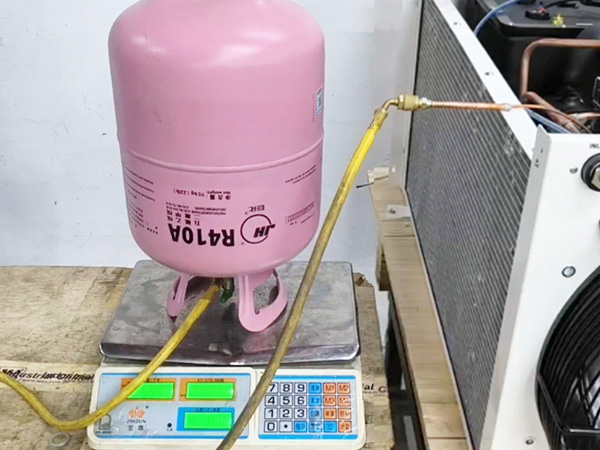If you find that the cooling effect of the laser chiller is unsatisfactory, it may be due to insufficient refrigerant. Today, we will use the TEYU S&A rack-mounted fiber laser chiller RMFL-2000 as an example to teach you how to properly charge the laser chiller refrigerant.
Operation Guide for TEYU S&A Laser Chiller Refrigerant Charging
If you find that the cooling effect of the laser chiller is unsatisfactory, it may be due to insufficient refrigerant. Today, we will use the rack-mounted fiber laser chiller RMFL-2000 as an example to teach you how to properly charge the refrigerant.
Steps for Chiller Refrigerant Charging:
First, please operate in a spacious and well-ventilated area while wearing safety gloves. Also, no smoking, please!
Next, let's get to the point: Use a Phillips screwdriver to remove the upper sheet metal screws, locate the refrigerant charging port, and gently pull it outwards. Then, unscrew the sealing cap of the charging port and easily loosen the valve core until the refrigerant is released.
ATTENTION: The internal pressure of the copper pipe is relatively high, so do not fully loosen the valve core all at once. After the refrigerant inside the water chiller is completely released, use a vacuum pump to extract the air inside the chiller for about 60 minutes. Before vacuuming, please remember to tighten the valve core.
Finally, it is recommended that you slightly open the valve of the refrigerant bottle to purge any air trapped inside the pipe and to avoid excessive air entering when you connect it to the charging pipe.

Chiller Refrigerant Charging Tips:
1. Choose the appropriate type and weight of refrigerant based on the compressor and model.
2. It is permissible to charge an additional 10-30g beyond the rated weight, but overcharging may cause compressor overload or shutdown.
3. After injecting an adequate amount of refrigerant, promptly close the refrigerant bottle, disconnect the charging hose, and tighten the sealing cap.
TEYU S&A Chiller uses the environmentally friendly refrigerant R-410a. R-410a is a chlorine-free, fluorinated alkane refrigerant that is a non-azeotropic mixture under normal temperature and pressure. The gas is colorless, and when stored in a steel cylinder, it is compressed liquefied gas. It has an Ozone Depletion Potential (ODP) of 0, making R-410a an environmentally friendly refrigerant that does not harm the ozone layer.
These guidelines provide detailed steps and precautions for charging refrigerant in the RMFL-2000 fiber laser chiller. We hope this information is helpful to you. For further insights on refrigerants, you can refer to the article Industrial Water Chiller Refrigerant's Classification And Introduction.


We're here for you when you need us.
Please complete the form to contact us, and we'll be happy to help you.









































































































